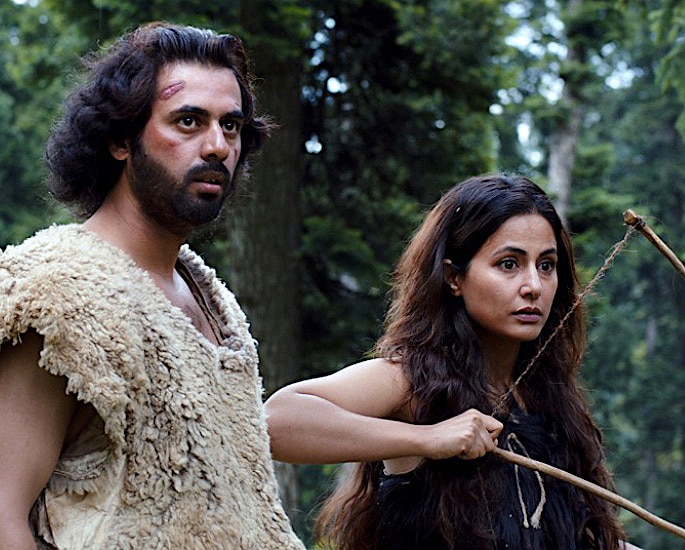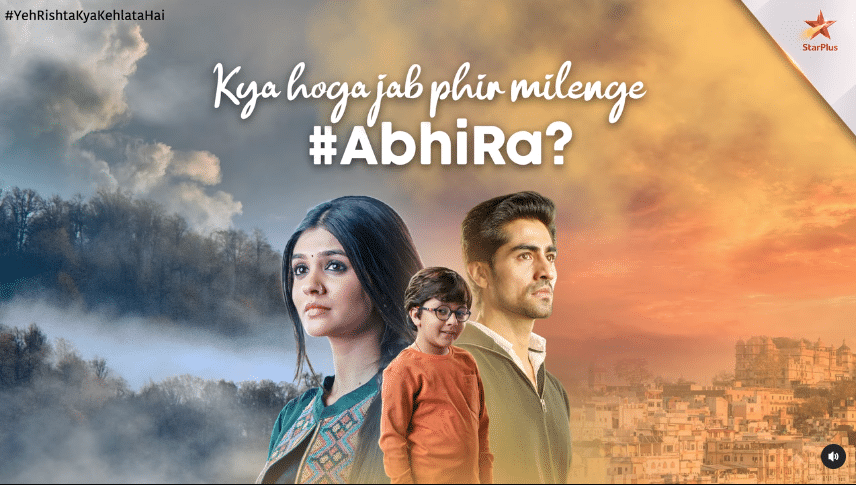CAST: Shoaib Nikash Shah, Hina Khan, Mir Sarwar, Anushka Sen, Hussein Khan, Pradhuman Singh
DIRECTOR: Rahat Kazmi
Country of Blind is an indie movie based on H G Well’s short story “The Country of the Blind”. The original story tells the tale of a man named Nunez who stumbles upon a hidden valley in the Andes Mountains where an isolated community, known as the Country of the Blind, resides. The unique aspect of this community is that all its inhabitants are blind, a condition that has persisted for generations. Nunez, however, can see.
Initially, Nunez believes that his sight will make him a leader in this society, but he soon realizes that the blind residents consider him handicapped because he possesses vision, which they cannot comprehend. In their culture, they have adapted to their blindness, and their society is well-structured around their other senses. They do not understand the concept of sight, and they believe Nunez’s descriptions of the world beyond their valley to be nonsensical.
Nunez falls in love with a woman named Medina-Saroté, and he wishes to marry her. However, her father refuses, believing that Nunez’s sight is a curse. Nunez is torn between staying in the Country of the Blind or leaving to the outside world.
The story explores themes of perception, difference, and the idea that what is considered a “disability” can be relative to one’s environment. It raises questions about the nature of normality and how societal norms shape our understanding of the world.
In the end, Nunez’s fate in the Country of the Blind is left ambiguous, as he faces the difficult decision of whether to embrace the unique culture of this society or attempt to return to the world he once knew.
The ethos of the story can be summarized as a reflection on the power of perspective, the limitations of preconceived notions, and the complexity of human adaptation to different environments. It challenges the idea that having sight is inherently superior and suggests that what may seem like a disadvantage can be an advantage within a specific context.
Expertly adapted in its one hour and forty one minutes of runtime, the movie captures the audience attention from its first frame. Shot in the higher Himalayan reaches of the Kashmir valley, the movie shines in its cinematography. The camera work is both visually stunning and purposeful. The cinematographer utilizes creative framing, lighting, and camera movements to enhance the storytelling. The visuals are not only aesthetically pleasing but also contribute significantly to the film’s thematic depth.
One of the most impressive aspects of this indie gem is the caliber of its performances. Both the lead actors deliver nuanced and authentic portrayals of their characters. Shoaib delivers the early 1900’s look with his impatient portrayal of Abhimanyu, frustrated with his situation to the effect that he throws tantrums. Hina romances the camera even when playing the blind Gosha. Anushka Sen, even when not in a major role, makes her presence felt. The character development is rich, and the audience can empathize with their struggles, motivations, and growth throughout the narrative. It’s evident that the filmmakers carefully selected the cast and worked diligently on character development.
The screenplay is a standout feature of this indie movie. The dialogue is sharp, thought-provoking, and often laden with subtext. It avoids clichés and delivers dialogue that feels organic and true to the characters. The script explores complex themes and emotions, making the viewer think and feel deeply.
The sound design and music in this film are impeccable. Soundscapes are used creatively to immerse the audience in the story’s world, and the musical score complements the emotional tone of the film beautifully. The filmmakers demonstrate a keen sense of how audio elements can enhance the cinematic experience flirting between Urdu, Hindi and Kashmiri.
The movie’s editing is precise and contributes to its overall impact. The pacing is well-managed, ensuring that the story unfolds at a rhythm that maintains the viewer’s interest. Transitions and cuts are seamless, and the film avoids any unnecessary filler, keeping the audience engaged throughout.
What sets “Country of Blind” apart is its willingness to take risks and explore unique storytelling approaches. It avoids the formulaic and predictable, opting instead for innovative narrative techniques or thematic exploration. This originality adds depth and memorability to the viewing experience.
Watching an indie movie that surprises with its authority over filmmaking aspects is a testament to the talent and dedication of its creators. It serves as a reminder that great storytelling, compelling characters, and creative filmmaking can transcend budget constraints. Such films enrich the cinematic landscape, offering fresh and thought-provoking narratives that leave a lasting impact on audiences.
Country of Blind plays in select theaters across the USA this week.







